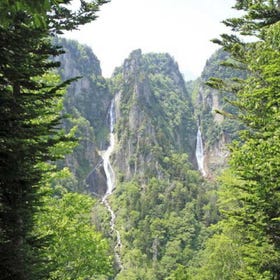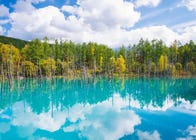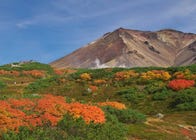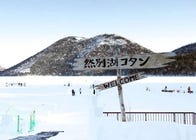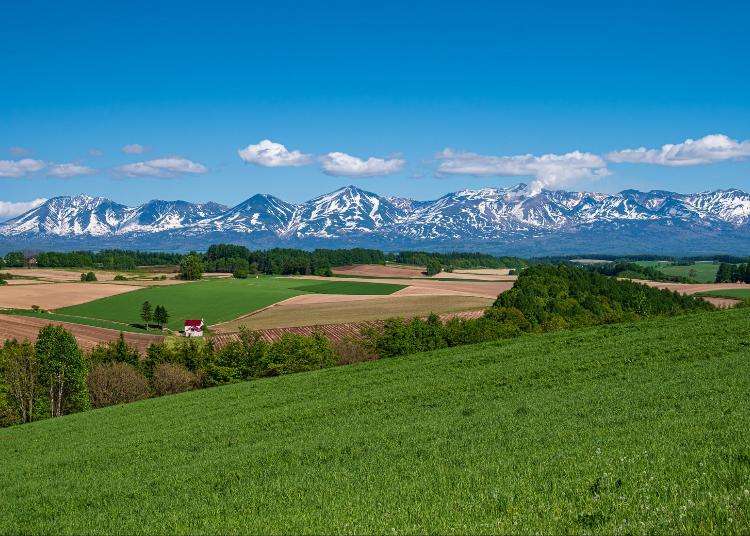
Daisetsuzan National Park is known as “Kamuy Mintar” in the language of the Ainu, Hokkaido’s indigenous people. “Kamuy Mintar” means “Playground of the Gods”. And when you set foot in Daisetsuzan, the largest of Japan’s land-based national parks, the reason for this nickname will be immediately obvious.
- Table of Contents
For the Ainu, this is a spiritual place where man walks among the spirits. For hikers, it’s a series of adventures just waiting to unfold. For photographers, it’s a holy grail of wildlife and breathtaking landscapes. It is a beautiful place, where the changing seasons bring out its different charms.
And here’s the good news— you don’t need a rental car or years of hiking experience to access or enjoy the national park! Many entrance points can be reached by public buses. Join us as we explore Daisetsuzan National Park’s four beautiful seasons and what each one has to offer.
Spring
Given its high altitude, spring doesn’t come to Daisetsuzan National Park until June and early July, when the majority of the snows retreat enough that the sun’s rays can start to warm the mountains. This is when hikers return to the trails, animals start to emerge from hibernation and alpine flowers start to push their way out from below the soil.
Highlight - Cheerful Chinguruma
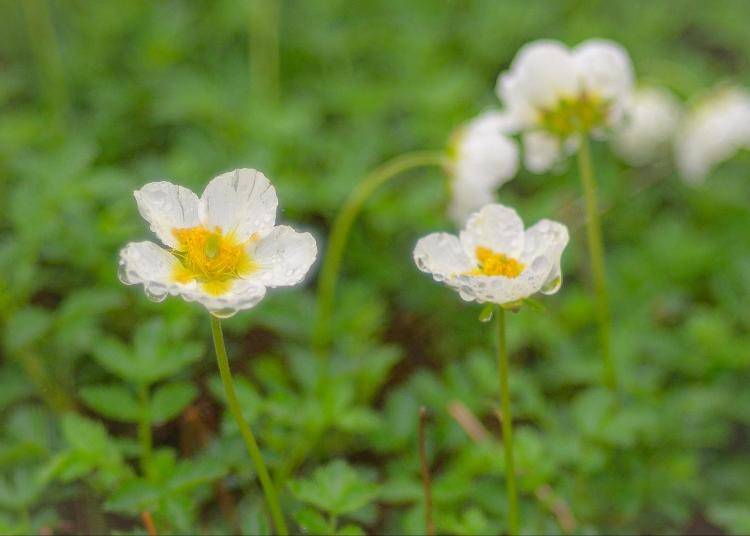
These flowers are known as “Aleutian avens” in English and are beloved by Hokkaido hikers, photographers and flower fanatics alike!
They usually bloom en masse in great plains across the park around early July, their cheerful, pure white petals heralding the start of the national park’s peak flower season.
For visitors keen to take a look, the best place to see them is Mt. Asahidake in the first half of July. Mt. Asahidake is the tallest mountain in Hokkaido and its summit is served by a ropeway. You can reach the ropeway via a public bus departing from Asahikawa Station, so a rental car isn’t even required to enjoy the sight of chinguruma!
There are plenty of chinguruma that bloom around the Sugatami Pond Loop, a relatively easy loop hike around the mountain that takes about two hours. Other than a few steep stairs, it does not require any great physical strength to complete, so it’s a suitable hike suitable even for beginners.
-
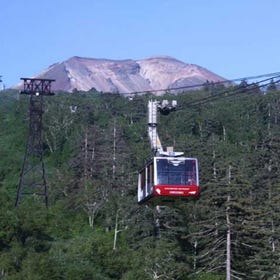
-
Address
1418, Yukomanbetsu, Higashikawa-cho, Kamikawa-gun, Hokkaido, 071-1472
View Map -
Nearest Station
Asahikawa Station (Soya Main Line / Hakodate Main Line / Furano Line)
85 minutes by bus
- Phone Number 0166-68-9111
-
Address
1418, Yukomanbetsu, Higashikawa-cho, Kamikawa-gun, Hokkaido, 071-1472
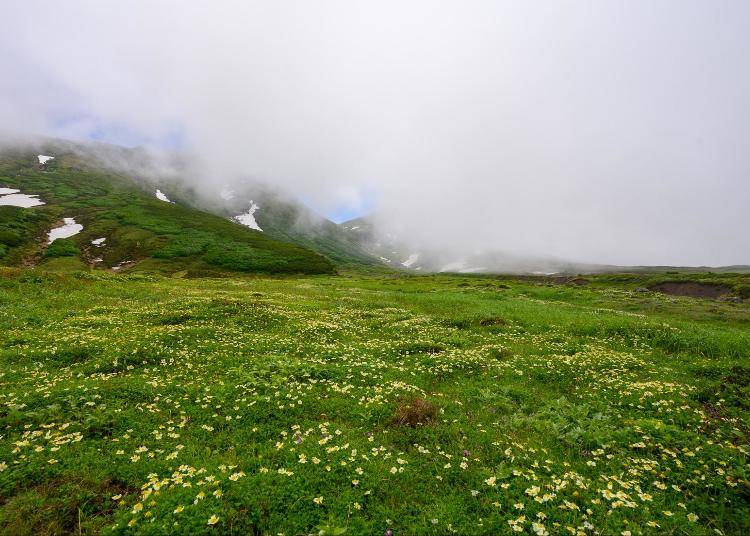
If you are a little more fit and active and would like more of a challenge, then we recommend taking the hike around the base of the mountain to Nakadake Onsen via Susoaidaira.
This route will take you through beautiful plains of chinguruma flowers on all sides! Plus, once you get to Nakadake Onsen, you’ll be able to dip your feet into this natural hot spring to refresh yourself after the hike!
However, it’s important to note this hike should not be attempted if you are inexperienced. The 6-7 hour round hike does have challenges such as loose terrain, some sharp climbs, plank crossings over rivers and snowfields— you’ll need to have some experience or knowledge of these conditions before undertaking the Susoaidaira-Nakadake hike.
Remember to always prepare yourself fully for the weather conditions on a hike and sign yourself in at the ropeway station before you depart. Above all else, don’t take any risks — Daisetsuzan can go from awe-inspiring to unforgiving very quickly.
Highlight - Lovely Lingering Snows
We are cheating a bit with this one as it is not actually a highlight that you can truly appreciate from within the park itself.
The best way to appreciate the sight of these wonderful lingering snows is from afar during the month of June. Places like Shin’ei no Oka in Biei, which offers amazing panoramic views of Daisetsuzan National Park, allows you to appreciate the alpine beauty of lingering snow before it disappears completely in the coming summer months.
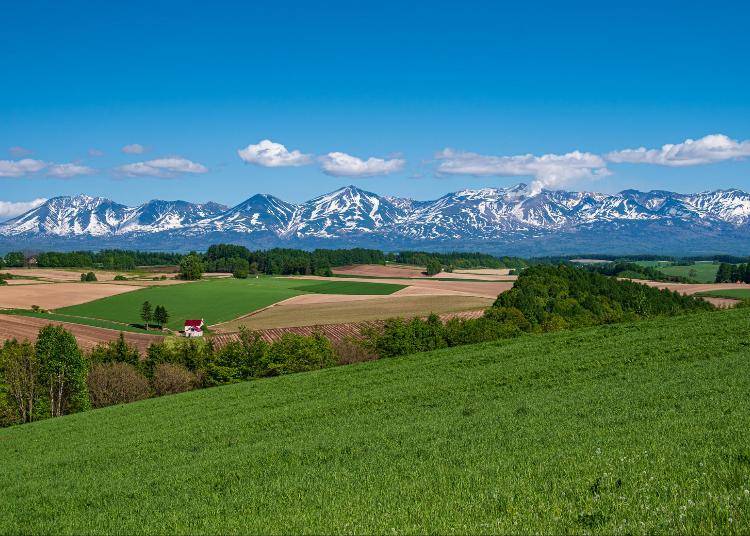
Shin’ei-no-Oka can be accessed by rental bicycle or taxi from Biei Station. We recommend cycling if you can to enjoy the sensation of Biei’s fresh air and cool breeze! If you have the energy, it’s worth extending your route to some of Biei’s other viewpoints like San’ai-no-Oka, from where you can enjoy more vistas of Daisetsuzan National Park’s lingering snows. Don’t forget your camera— the views are instantly Instagrammable!
-
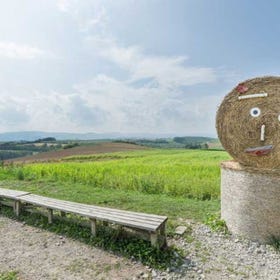
-
Address
Bibaushi, Biei-cho, Kamikawa-gun, Hokkaido Shinsakae, 071-0471
View Map -
Nearest Station
Biei Station (Furano Line)
10 minutes by car
- Phone Number 0166-92-4378
-
Address
Bibaushi, Biei-cho, Kamikawa-gun, Hokkaido Shinsakae, 071-0471
Summer
Summer in Daisetsuzan National Park is short, but glorious. The peak summer season is from late July through to the end of August, whereupon the weather starts to get a little chilly. This is Daisetsuzan at the absolute peak of its beauty and is one of the park’s more popular seasons.
Highlight - Have some fun hiking!
When Japanese think of Daisetsuzan in summer, the first thing that almost certainly comes to mind will be hiking. Once snow disappears from the routes from around the end of July, hikers flock to trails across the park to enjoy the great outdoors.
Some easy routes accessible via public transport include the Sugatami Pond loop on Mt. Asahidake (which we have already covered) as well as the Momijidani hike from the Sounkyo Visitor Centre in Sounkyo Onsen, a flat and well-maintained route which can be completed in around 60 - 90 minutes. The trailhead is accessible from the base of the Sounkyo Ropeway, which is served by a public bus from Asahikawa.
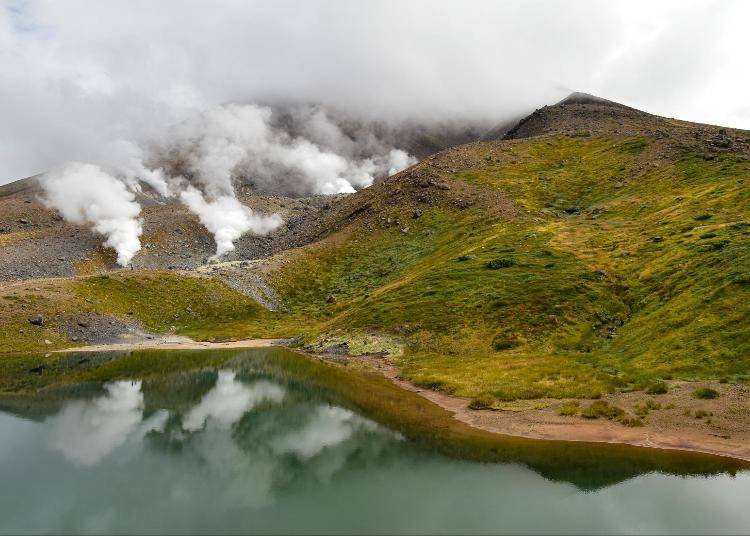
Both routes offer some amazing views and photo ops and given that they are relatively light courses, you don’t need to prepare special equipment or do any kind of training to enjoy them.
If however you are a more adventurous type and looking for some longer or more challenging hikes during your time in Daisetsuzan National Park, this is a different kettle of fish.
It is considered to be one of the more challenging places to hike in Japan. If you wish to undertake the challenge of one of Daisetsuzan’s longer routes, please be sure you do the necessary research, prepare the necessary equipment and make sure you are sufficiently fit and experienced before attempting any more challenging hikes.
But most importantly of all — have fun! As well as challenging, it is also a very rewarding place to hike, with some amazing views awaiting you. You can learn more about this fantastic area at the link below.
Highlight - Wonderful Wildlife
As the snows melt, creatures great and small come out of hibernation and begin to explore the mountains.
There are all kinds of cute critters to be found in the park. A particular favourite is the northern pika, something of an icon in Daisetsuzan. This fluffy little fellow is part of the same family as the rabbit and despite only being about the size of a hamster, they have a very loud shriek! You will probably hear it before you see it— it sounds like a sharp, shrill bird call.
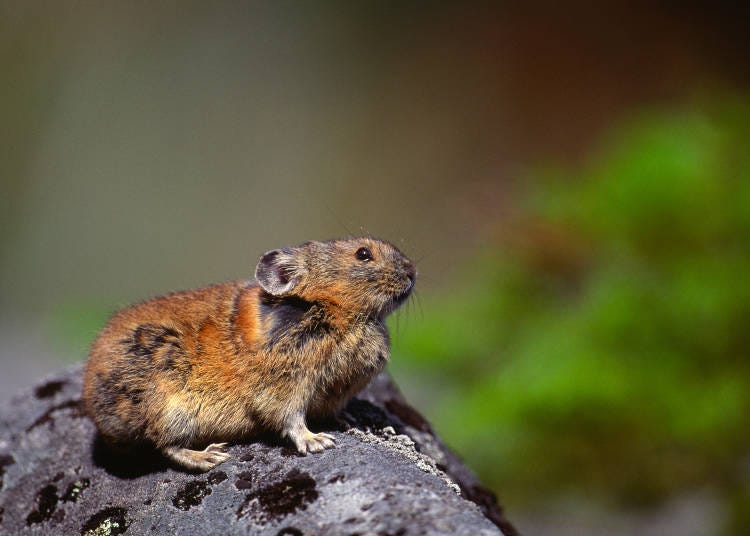
You can find pikas hanging out in the rocky scree on the slopes of Mt. Tokachidake. You can access the mountain’s trailhead from the Tokachidake Observatory in Biei, accessible via return taxi from Biei Station (though the taxi is quite expensive and will likely cost more than 10,000 yen — make sure you have enough cash on you).
Another favourite of wildlife-spotters is the Siberian chipmunk, found often along the Sugatami Pond loop on Mt. Asahidake. You can often spot it perched on rocks or Siberian dwarf pines, its little cheeks stuffed full of pine cones, berries and anything else it can get its paws on!
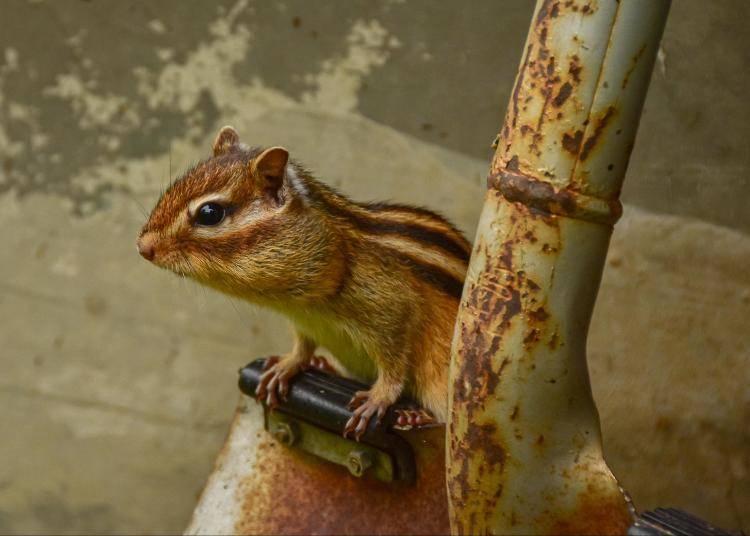
If you’re hiking during the summer, you’re likely to see even more animals in Hokkaido. Various species of wild birds and deer roam the hiking trails— and of course, Hokkaido’s famous brown bear! Although catching a glimpse of one is exciting and they are not confrontational by nature, it is still best to keep your distance from this large predator, which can behave unpredictably.
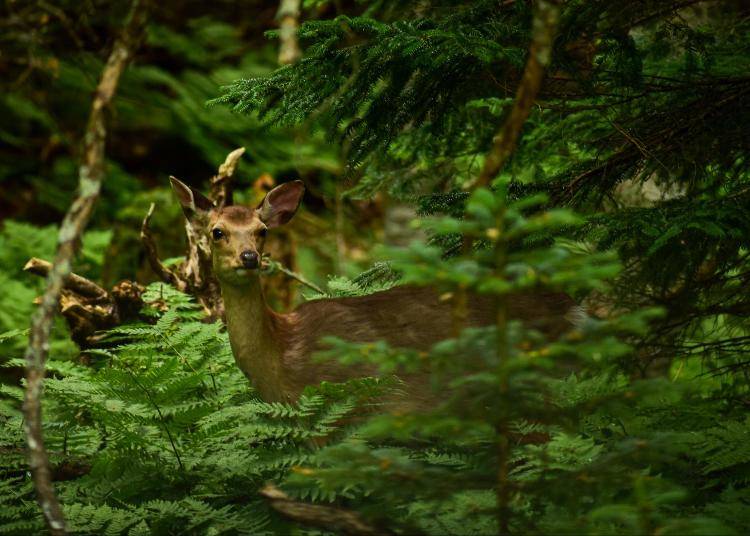
You’ll have a better chance of spotting wildlife if you’re up in the early morning when they are most active. Finally, although they are very cute and we understand wanting to get a good photo, please do not feed any wild animals you see in the national park.
Autumn
Autumn in Daisetsuzan arrives much earlier than the rest of Japan, with the first colours changing at altitude around late September. This is perhaps a more popular season than even summer, attracting visitors in large numbers to see the dazzling autumn leaves.
Highlight - Amazing Autumn Leaves
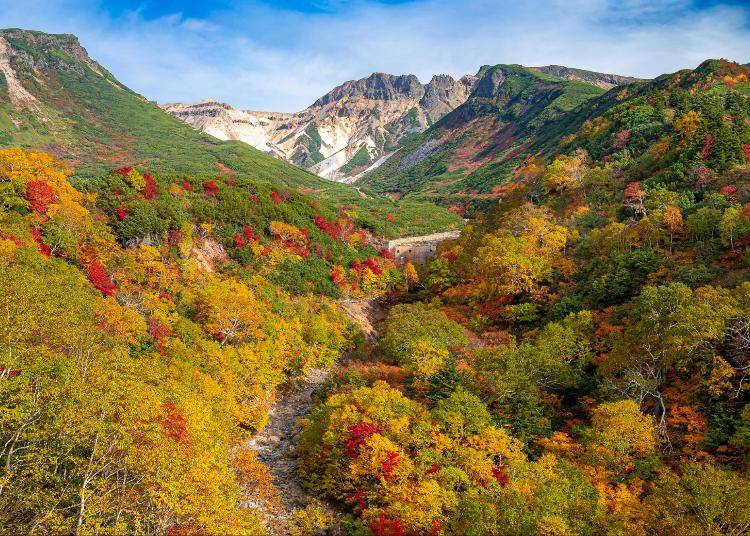
Which means, obviously, this season’s biggest appeal is its beautiful autumn colours!
Given the scale of Daisetsuzan National Park, autumn colours appear at varying times across its breadth and width. However, Asahidake and Kurodake are among the first to see the peak of colours in around late September.
The Kurodake Ropeway in Sounkyo Onsen is one of Hokkaido’s most popular autumn attractions. As you ascend the mountain, you’ll be surrounded by bright reds, oranges and yellows. Looking out at the surrounding peaks from the ropeway station is quite an astonishing sight— you can see the gradation of colours down the mountains before your very eyes.
-
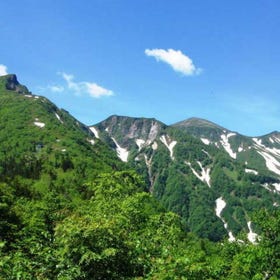
-
Address
Sounkyo, Kamikawa-cho, Kamikawa-gun, Hokkaido, 078-1701
View Map -
Nearest Station
Kamikawa Station (Sekihoku Main Line)
- Phone Number 01658-5-3031
-
Address
Sounkyo, Kamikawa-cho, Kamikawa-gun, Hokkaido, 078-1701
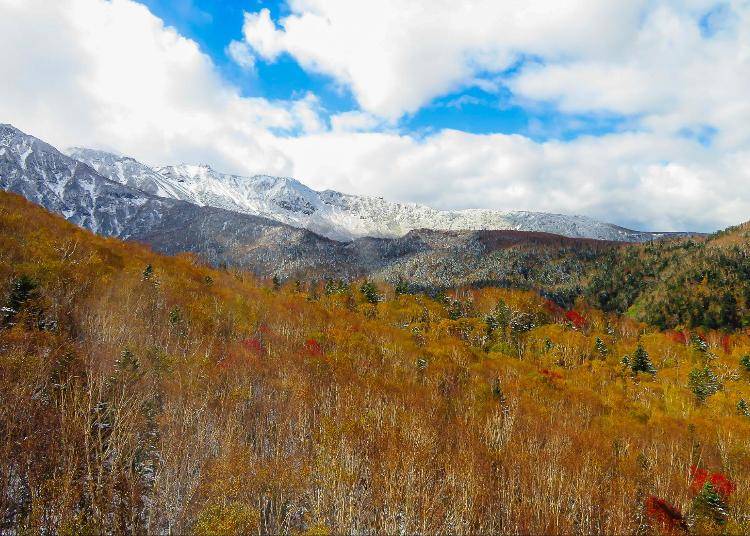
Back down the base of the mountain in Sounkyo Onsen, you can also explore the Ryusei and Ginga Falls. These two enormous waterfalls crash down from Sounkyo’s unique volcanic stone structure and are quite a breathtaking sight when draped in their golden autumn garb.
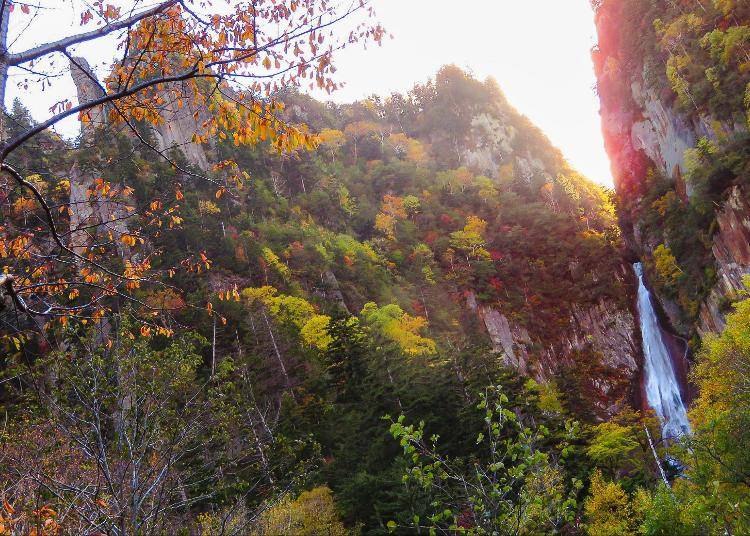
Sugatami Pond on Mt. Asahidake is also a beautiful sight in autumn— the sapphire blue pond reflecting the surrounding autumn colours in late September is not to be missed!
In early October, you can enjoy the colours as they reach Mt. Tokachidake in Biei. This mountain sits right in the middle of the Tokachi Volcanic Group, a spine of mountains spanning almost the entire western edge of Daisetsuzan National Park. As such, it offers astonishing views of many of the national park’s peaks in their blazing autumn glory.
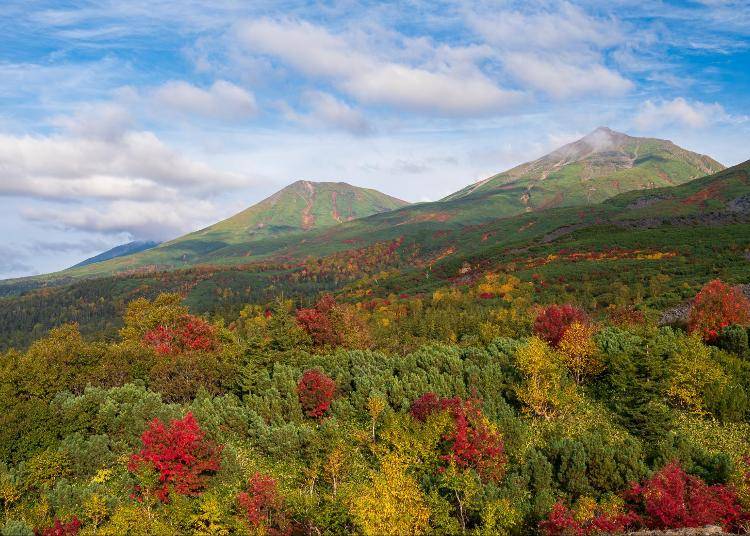
And while you’re in Biei, it is worth dropping by both Shirahige Falls and the Blue Pond on your way home from Mt. Tokachidake. Although not technically in the national park, both are at their most beautiful in autumn. The colours peak around early-mid October and they are not to be missed — be sure to check them out!
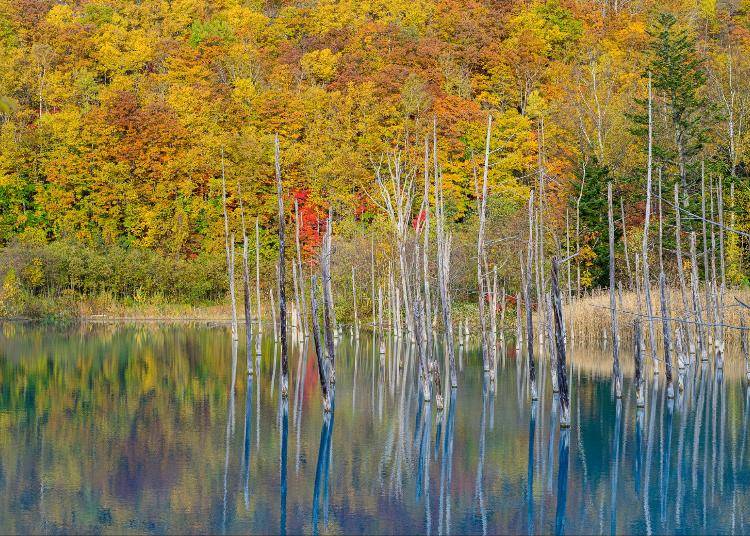
Winter
Winter conditions in Daisetsuzan National Park officially begin as soon as the first snows fall, which is usually sometime in early October — often when autumn leaves are still on the trees. The snowfall tends to dust the mountains and melt once, before a more permanent winter blanket falls and buries the mountains until the thaw starts in April-May.
Highlight - Warming Onsen
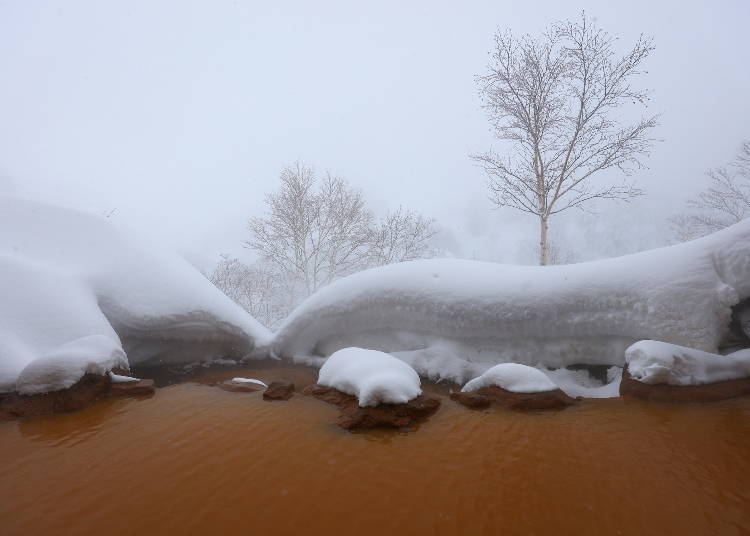
Japan’s hot springs are wonderful all year round, of course! But there is nothing quite like having a soak in gloriously warm hot springs when surrounded by a peaceful, snowy landscape.
Daisetsuzan National Park is full of both active and expired volcanoes. Its veins course with magma and geothermal springs. This gives it a large concentration of hot springs from north to south. Resorts and ryokan have popped up around these springs and they are popular among domestic Japanese tourists— especially in Hokkaido’s chilly winter!
Shirogane Onsen in Biei, Sounkyo Onsen and Asahidake Onsen on the slopes of Mt. Asahidake itself are all easily accessible by public buses departing from Asahikawa Station and even make for doable onsen day trips if you are staying in Biei, Furano or Asahikawa.
If you dare, try a “rotenburo”, an outdoor bath, in winter. Although getting to and from the baths in subzero conditions is undeniably a challenge, the cold weather compliments the hot water to give your circulation a great boost! (And if you usually overheat in hot springs, you’ll find that the cold temperature outdoors stops that from happening in winter— meaning you can enjoy onsen for longer than you might usually be able to!)
Highlight - Super Snowshoeing
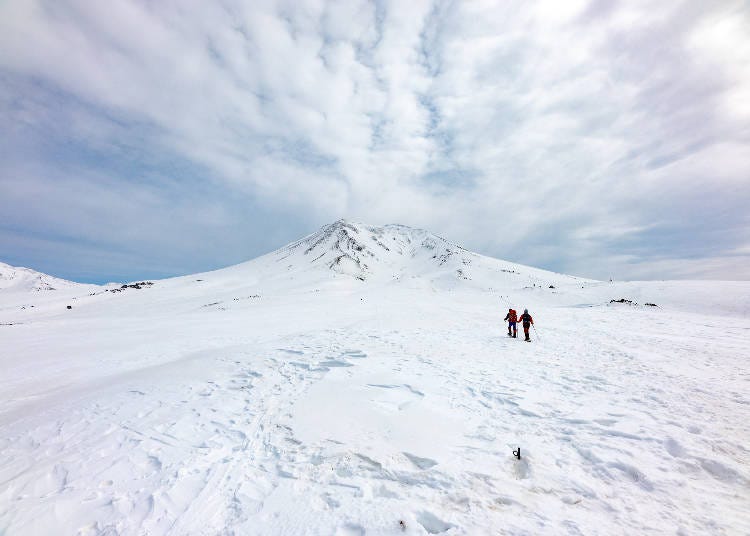
Hokkaido in winter is often synonymous with winter sports like skiing or snowboarding. However, given the expenses, risks and experience requirement that comes with skiing in Japan, it is not everyone’s cup of tea.
Fortunately, Hokkaido’s residents also enjoy a much more low-risk winter activity with little to no experience required— snowshoeing!
This activity is exactly how it sounds. You don snowshoes, which are like large hollow slippers that attach to your feet, and head out across Hokkaido’s snow plains. Snowshoes help to distribute your weight evenly across the fluffy powder snow, so you can walk right across it without sinking! Unlike skiing or snowboarding, no particular skills are required so it’s suitable for beginners.
Snow completely changes Daisetsuzan’s landscape, offering views in winter that you wouldn’t normally see in summer.
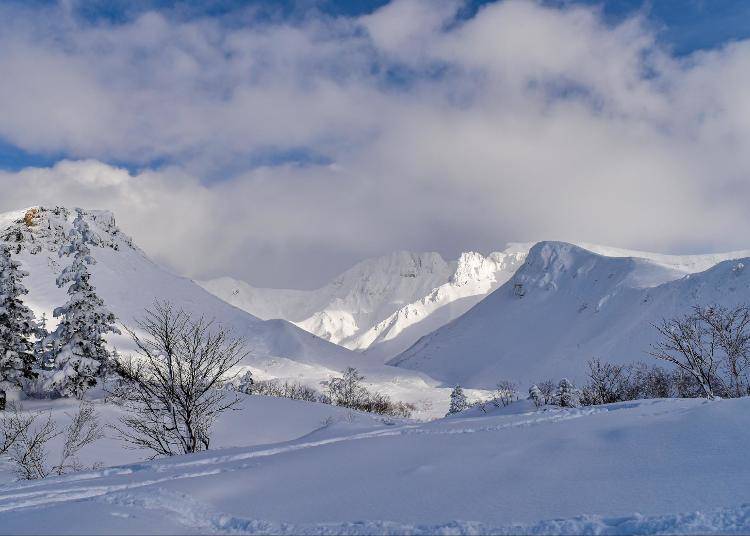
There are a number of places where you can enjoy snowshoeing in Daisetsuzan National Park.
Asahidake Visitor Centre offers snowshoe rental for visitors, allowing you to head out and explore the mountain even in the wintery snow! However, don’t stray too far from the ropeway station — Daisetsuzan National Park is not the place to be lost in midwinter!
Other places in or near Daisetsuzan where you can experience snowshoeing are Biei, Sounkyo Onsen and Furano. Check in with local tourism associations and tour operators during winter to see what kinds of fun snowshoeing routes they have to offer.
A Treasure Trove of Seasonal Delights
Daisetsuzan National Park is full of things to see and do all year round — and the good news is that much of it is accessible even without a rental car. During your next visit to Hokkaido, be sure to visit the Playground of the Gods and see what incredible experiences await you there!
(Except where otherwise noted, all photos are by the author)
-

-
Address
Kamikawa-cho, Kamikawa-gun, Hokkaido, Higashikawa-cho, Kamikawa-gun, Biei-cho, Kamikawa-gun, Kamifurano-cho, Sorachi-gun, Minamifurano-cho, Sorachi-gun, Shihoro-cho, Kato-gun, 078-1700
View Map -
Nearest Station
Kamikawa Station (Sekihoku Main Line)
- Phone Number 016-589-4400
-
Address
Kamikawa-cho, Kamikawa-gun, Hokkaido, Higashikawa-cho, Kamikawa-gun, Biei-cho, Kamikawa-gun, Kamifurano-cho, Sorachi-gun, Minamifurano-cho, Sorachi-gun, Shihoro-cho, Kato-gun, 078-1700
Written by:

- Area
- Category
*Prices and options mentioned are subject to change.
*Unless stated otherwise, all prices include tax.
Limited time offer: 10% discount coupons available now!
Recommended places for you
-
Appealing
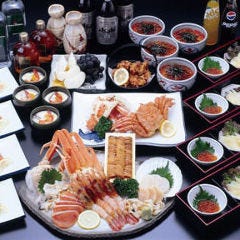
Rukku and Uohei
Izakaya
Sapporo / Chitose
-
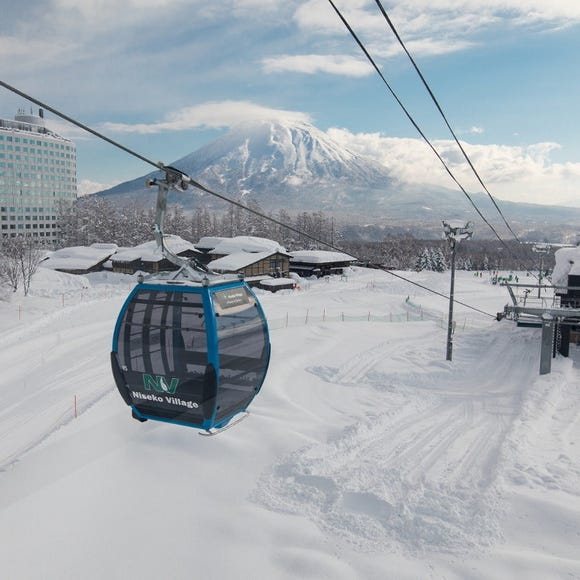
Niseko Village Ski Resort
Skiing & Snowboarding
Niseko / Rusutsu
-
Appealing
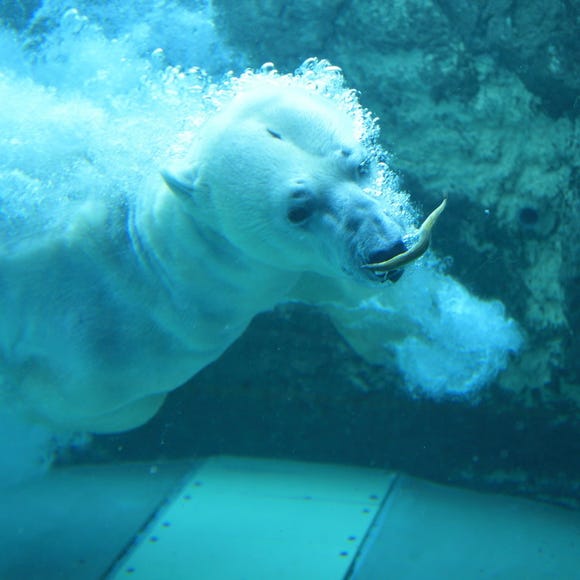
Asahiyama Zoo
Zoos, Aquariums & Botanical Gardens
Asahikawa
-
Appealing
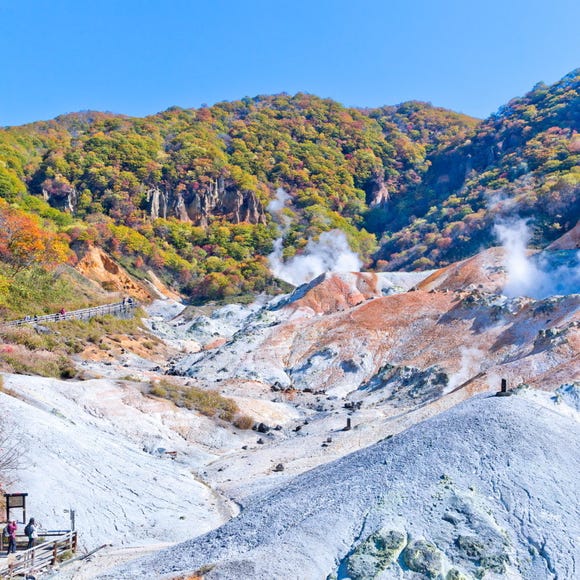
Noboribetsu Onsen
Hot Springs (Onsen) & Bath Houses (Sento)
Noboribetsu / Lake Toya
-
Appealing
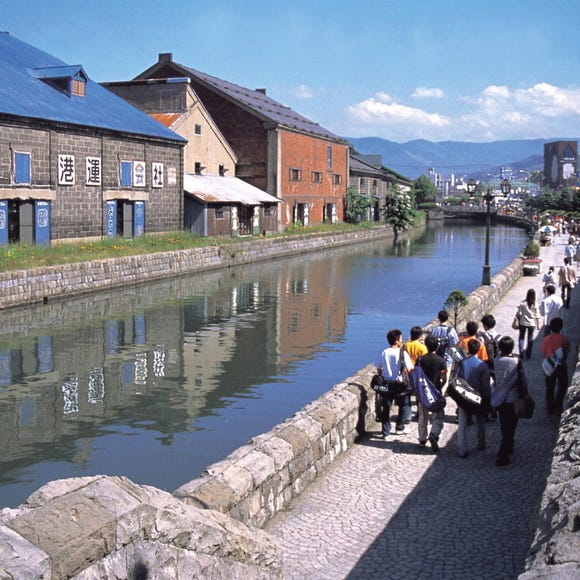
Otaru Canal
Rivers, Lakes & Canyons
Otaru
-
Appealing
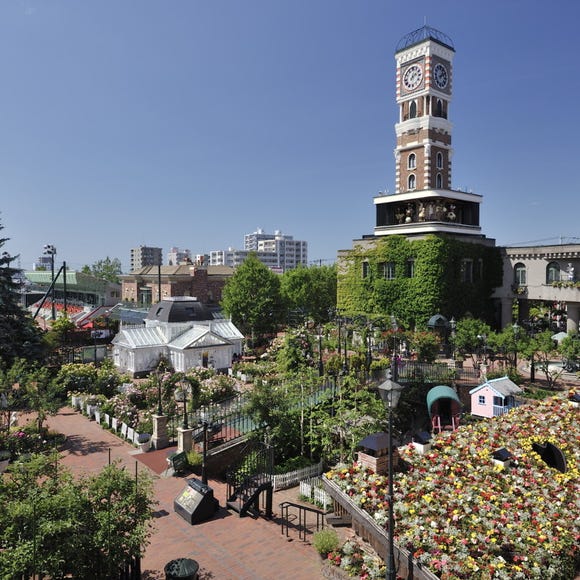
Shiroi Koibito Park
Theme Parks
Sapporo / Chitose
-
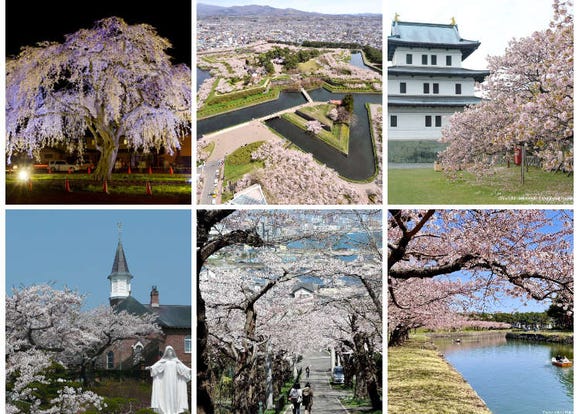
Complete Guide to Cherry Blossoms in Hakodate & Southern Hokkaido (Best in Early May)
-

Exploring Moyuk Sapporo: A New Tanukikoji Landmark with an Aquarium and New Donki Store!
-
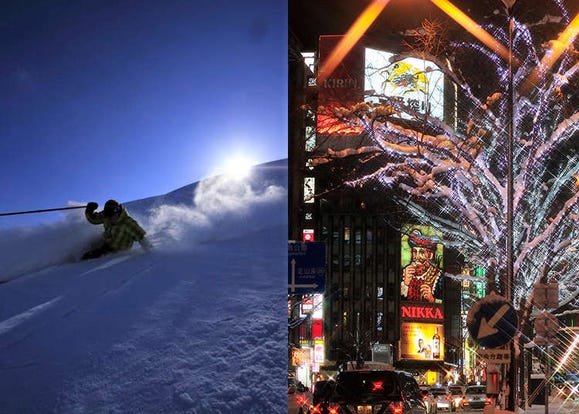
1-Day Winter Adventure in Sapporo (Hokkaido): Enjoy Snow by Day, Food by Night!
-

Expert-Recommended! 5 Sapporo Hotels with Great Breakfasts
-
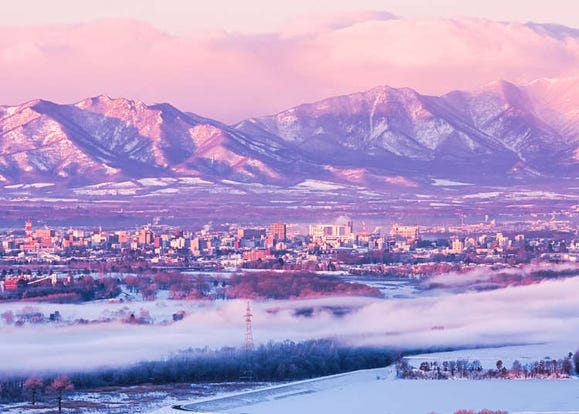
Your Trip to Obihiro (Hokkaido): The Complete Guide - Activities, Hotels, Savers & More
-
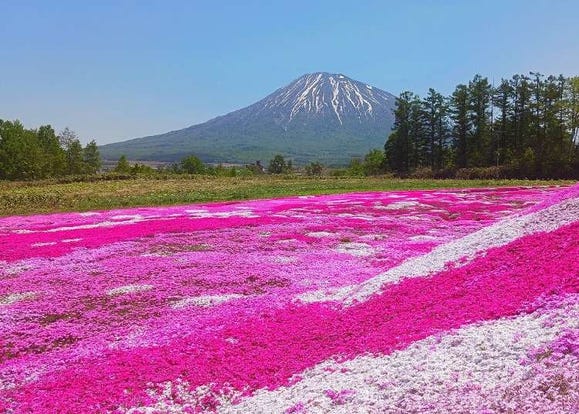
4 Must-Visit Spots for Beautiful Pink Moss Phlox Carpets in Hokkaido: Monthlong 'Floor Sakura' Viewing
-
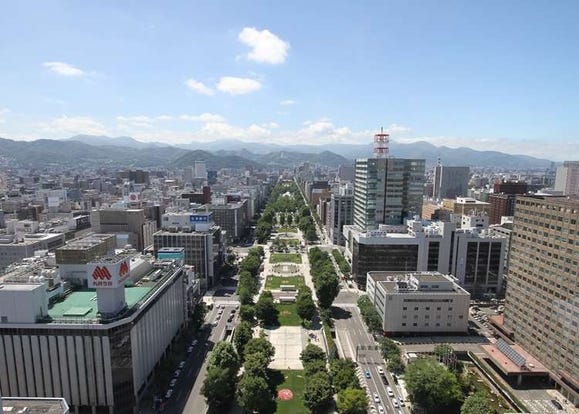
Guide to Central Sapporo: Highlights Of Odori Park & Sapporo TV Tower
-

Secrets to Shopping in Japan: Guide to Annual Sales in Japan & Where to Shop
-
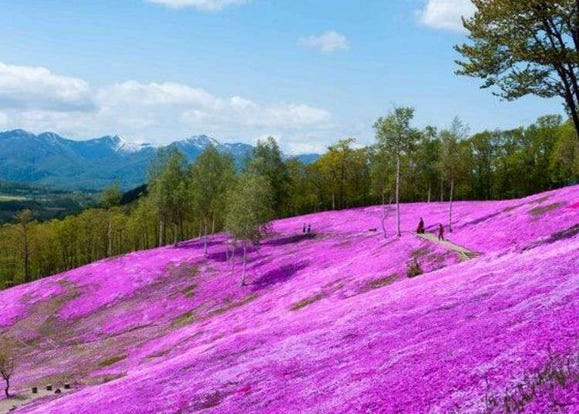
Hokkaido Scenery: Japan Has an Incredible 200km ‘Flower Road’ - Where Spring Bursts Into a Floor of Pink
-
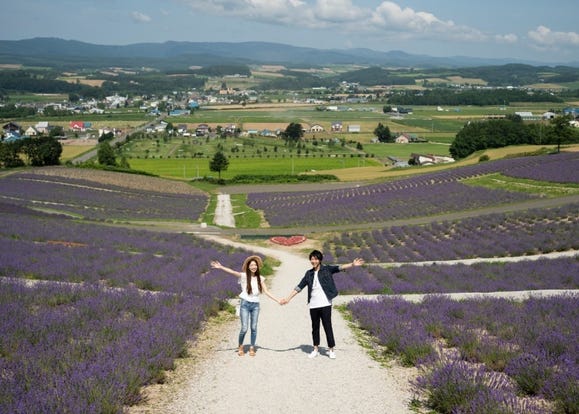
Hokkaido Lavender Fields: 6 Best Places in Furano to See Japan's Dreamiest Purple Meadows
-
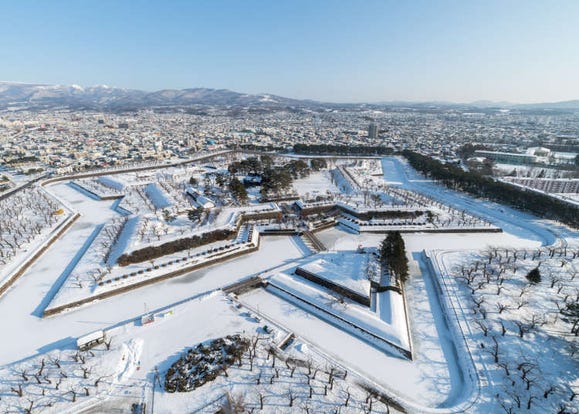
These 16 Things to Do in Hakodate Japan Will Make You Fall in Love With the Northern Wonderland
-

Japan's Fascinating Moerenuma Park: Isamu Noguchi's Stunning Living Sculpture
- #best sushi hokkaido
- #things to do hokkaido
- #best ramen sapporo
- #what to bring to japan
- #new years in tokyo
- #what to buy in ameyoko
- #japanese nail trends
- #what to do in odaiba
- #onsen tattoo friendly tokyo
- #daiso
- #best sweets otaru
- #japanese fashion culture
- #best nature furano
- #japanese convenience store snacks
- #best japanese soft drinks
















